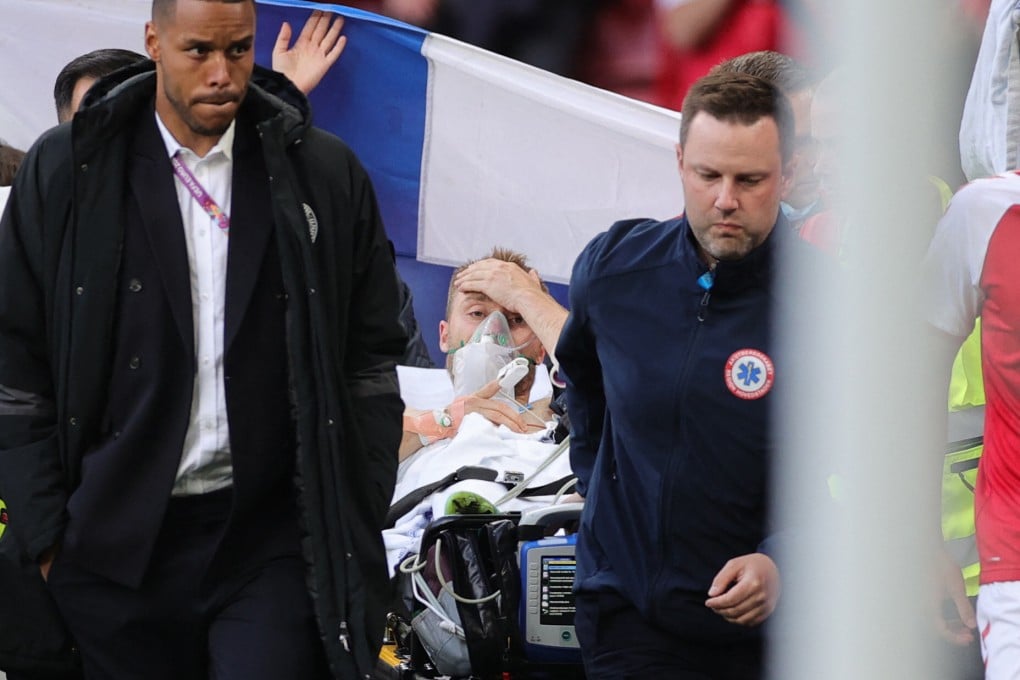Someone’s having a heart attack; do you know how to give CPR or use an AED? 5 steps that increase a victim’s chances of surviving
- Danish footballer Christian Eriksen’s cardiac arrest mid-match highlighted the importance of speedy action to prevent lasting damage – or worse
- Two Hong Kong doctors describe the steps to save a life, urge people to learn how to use automated external defibrillators, and call for more AEDs in the city

When Denmark midfielder Christian Eriksen suffered a cardiac arrest while playing for his country in soccer’s European Championship last year, it provided one of 2021’s most shocking images.
Only the swift intervention of his team’s captain, Simon Kjaer, and the medical staff saved Eriksen’s life after his collapse during Denmark’s match against Finland in what was an ordeal for all those who witnessed it.
Kjaer cleared his teammate’s airways and start life-saving cardiopulmonary resuscitation (CPR), which was continued with the aid of an automated external defibrillator (AED) and the team’s professional medical staff.
“[Eriksen] was gone,” Denmark’s team doctor Morten Boesen told the media at the time. “We did cardiac resuscitation, it was a cardiac arrest. How close were we to losing him? I don’t know but we got him back after one defib, so that’s quite fast.”

Thankfully, the footballer, aged 29 at the time, has since made a full recovery, and has had a defibrillator implanted to help prevent future cardiac arrests. The CPR he received on the pitch saved his life, and shows how crucial it is to know what to do if someone suffers a heart attack.
